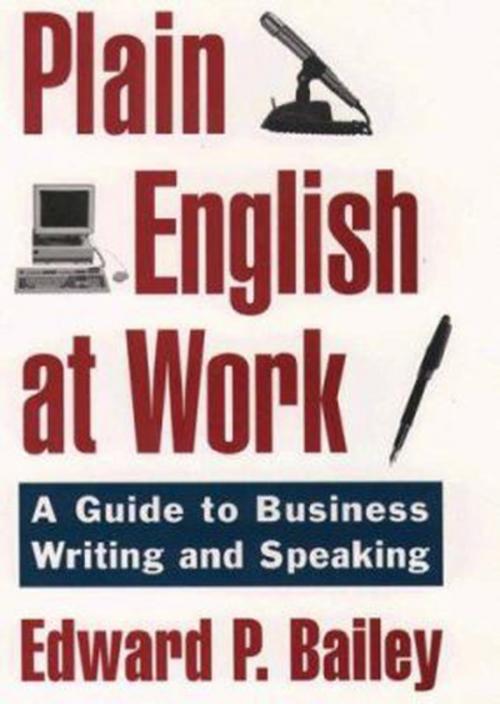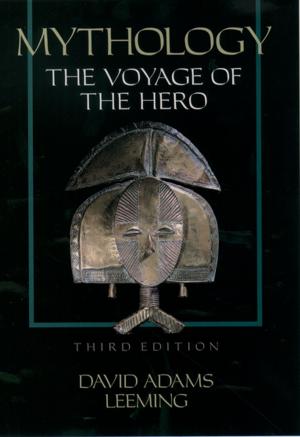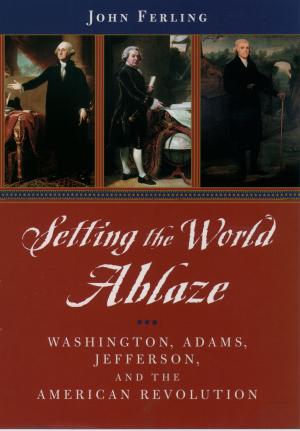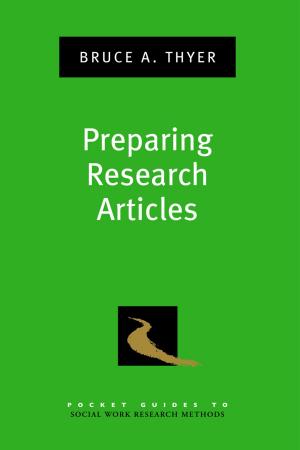The Plain English Approach to Business Writing
Business & Finance, Business Reference, Business Writing, Nonfiction, Reference & Language, Language Arts, Writing & Publishing, Writing Skills, Reference| Author: | Edward P. Bailey, Jr. | ISBN: | 9780199746279 |
| Publisher: | Oxford University Press | Publication: | August 7, 1997 |
| Imprint: | Oxford University Press | Language: | English |
| Author: | Edward P. Bailey, Jr. |
| ISBN: | 9780199746279 |
| Publisher: | Oxford University Press |
| Publication: | August 7, 1997 |
| Imprint: | Oxford University Press |
| Language: | English |
In offices across America, the Masters of Gobbledygook are hard at work. They're bombarding in-boxes with those long, confusing memos that colleagues don't have the patience to read--and bosses don't have the time to rewrite. They use words like "commence" or "prior to" instead of "begin" or "before." They bury their main point somewhere in the last paragraph--and take two pages to get there. Everybody knows one of them; in fact, you may even be one of them. But now there's help for anyone who's ever fallen prey to businessese, academese, legalese, or any other "ese" when faced with a blank memo pad. In The Plain English Approach to Business Writing, Edward Bailey--who spent twenty years working in the bastions of bureaucratese--offers readers a powerful new communications tool. Written for busy professionals who want to improve the quality and clarity of their own (or their staff's) writing style, this no-nonsense guide is an indispensable office companion. Bailey's approach is 5urprisingly straightforward: just write as you would talk. Plain English is not only easier to read; it's also easier to write. And it's so effective that many large organizations are endorsing, if not demanding, its use in the work place. Pithy and entertaining, Bailey points out all the dos and don'ts of plain English. He then illustrates them with examples drawn from a wide array of sources, including business documents, technical manuals, trade publications like Consumer Reports, and the works of writers such as Russell Baker and John D. MacDonald. From the basics to the fine tuning, he offers practical advice on clarity and precision, organization, layout, and a host of other important writing topics. A delightful, down-to-earth guide, The Plain English Approach to Business Writing is for professionals of all backgrounds (government, military, legal, financial, technical, corporate) and staff at all levels (from the company CEO to the ambitious secretary). The Plain English Approach to Business Writing can be read in an hour--and used for the rest of one's life.
In offices across America, the Masters of Gobbledygook are hard at work. They're bombarding in-boxes with those long, confusing memos that colleagues don't have the patience to read--and bosses don't have the time to rewrite. They use words like "commence" or "prior to" instead of "begin" or "before." They bury their main point somewhere in the last paragraph--and take two pages to get there. Everybody knows one of them; in fact, you may even be one of them. But now there's help for anyone who's ever fallen prey to businessese, academese, legalese, or any other "ese" when faced with a blank memo pad. In The Plain English Approach to Business Writing, Edward Bailey--who spent twenty years working in the bastions of bureaucratese--offers readers a powerful new communications tool. Written for busy professionals who want to improve the quality and clarity of their own (or their staff's) writing style, this no-nonsense guide is an indispensable office companion. Bailey's approach is 5urprisingly straightforward: just write as you would talk. Plain English is not only easier to read; it's also easier to write. And it's so effective that many large organizations are endorsing, if not demanding, its use in the work place. Pithy and entertaining, Bailey points out all the dos and don'ts of plain English. He then illustrates them with examples drawn from a wide array of sources, including business documents, technical manuals, trade publications like Consumer Reports, and the works of writers such as Russell Baker and John D. MacDonald. From the basics to the fine tuning, he offers practical advice on clarity and precision, organization, layout, and a host of other important writing topics. A delightful, down-to-earth guide, The Plain English Approach to Business Writing is for professionals of all backgrounds (government, military, legal, financial, technical, corporate) and staff at all levels (from the company CEO to the ambitious secretary). The Plain English Approach to Business Writing can be read in an hour--and used for the rest of one's life.















